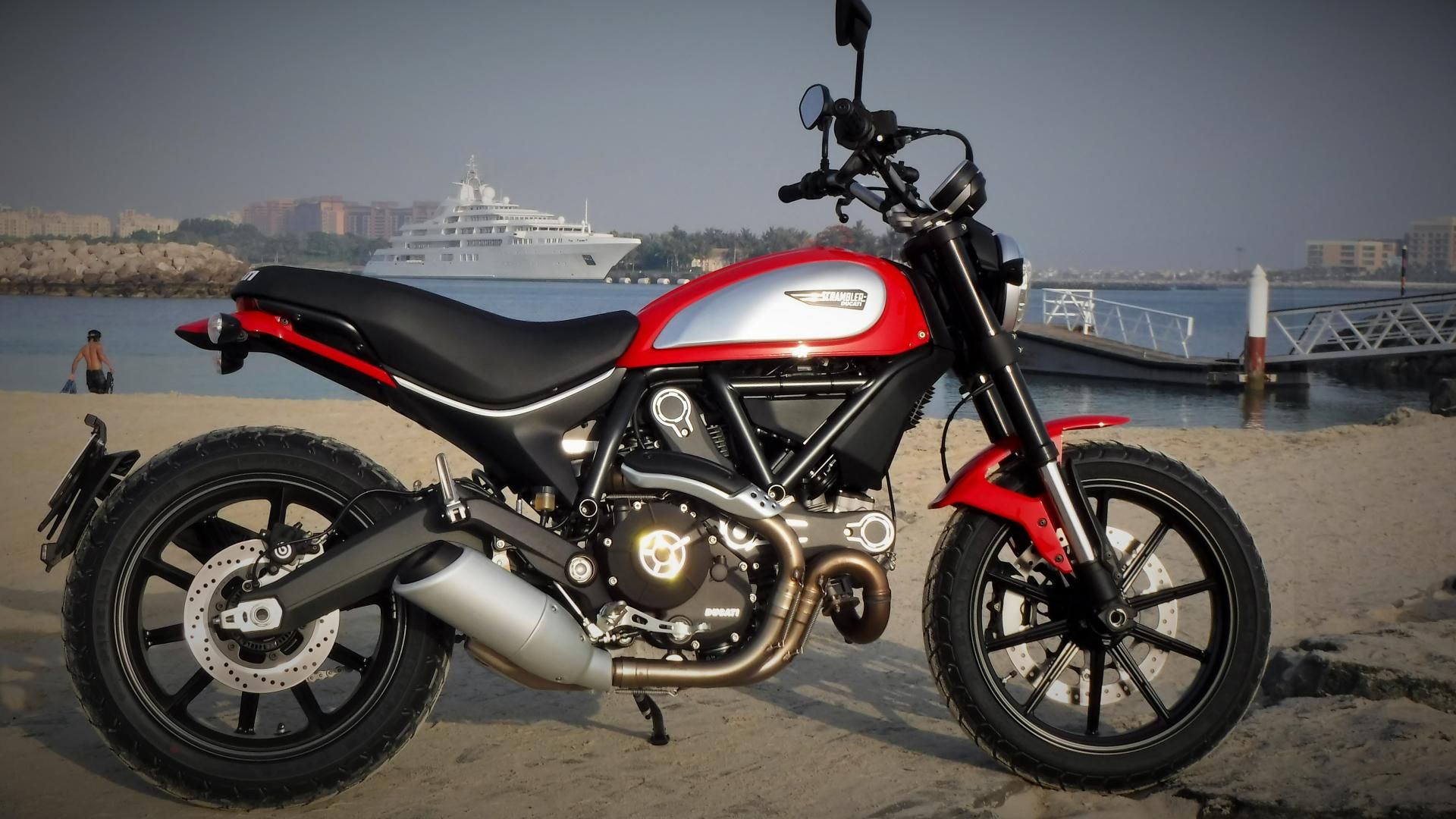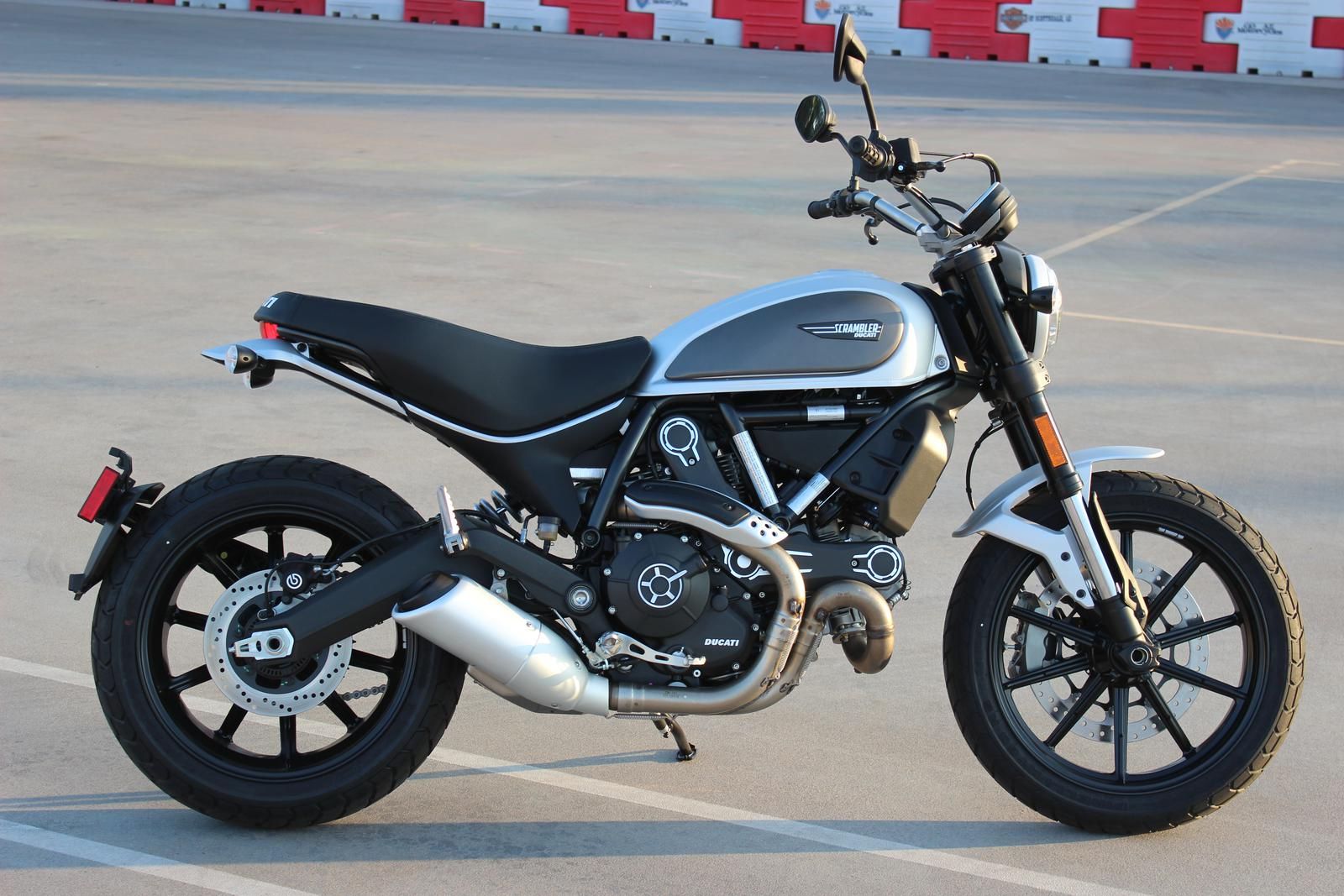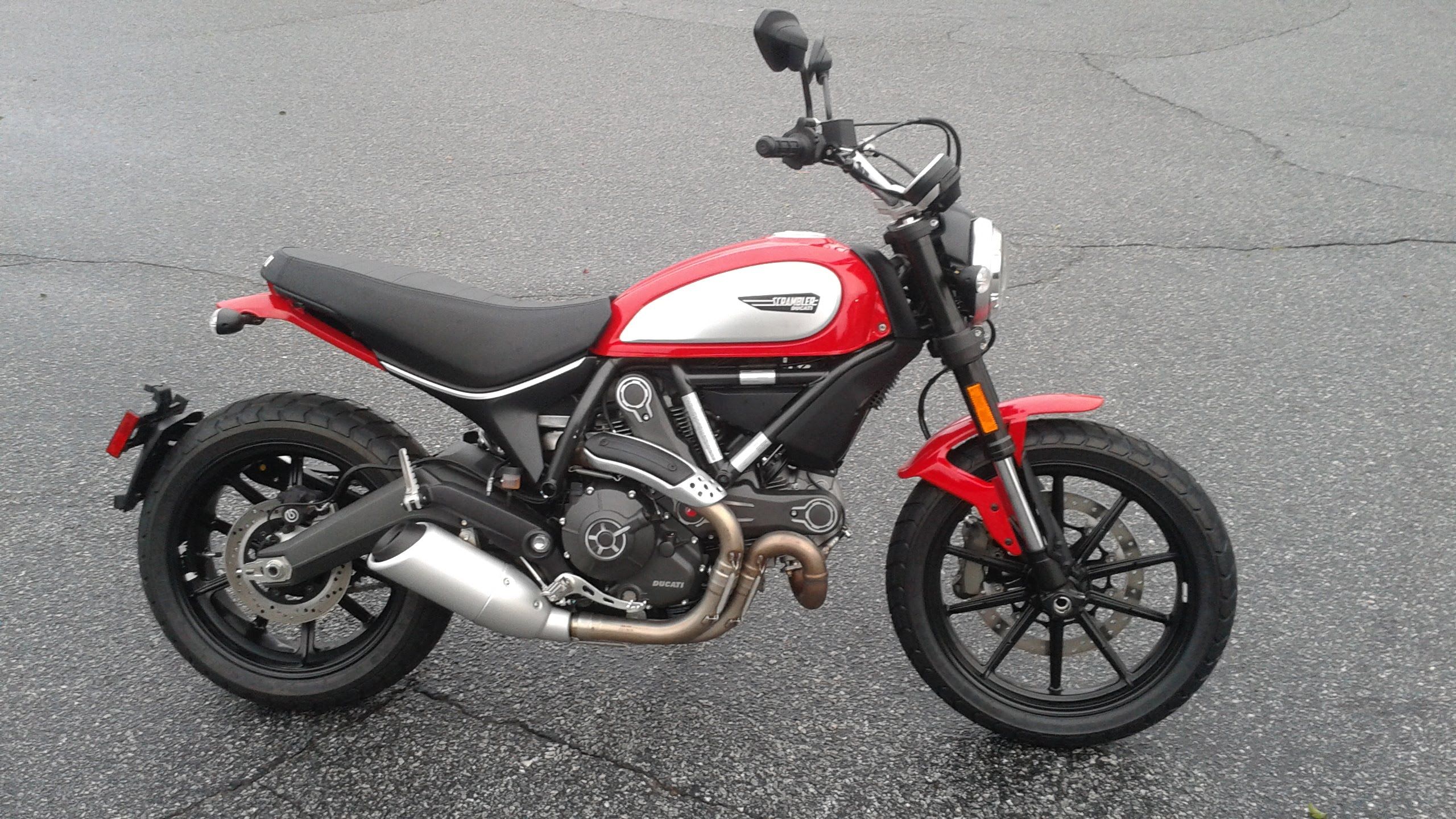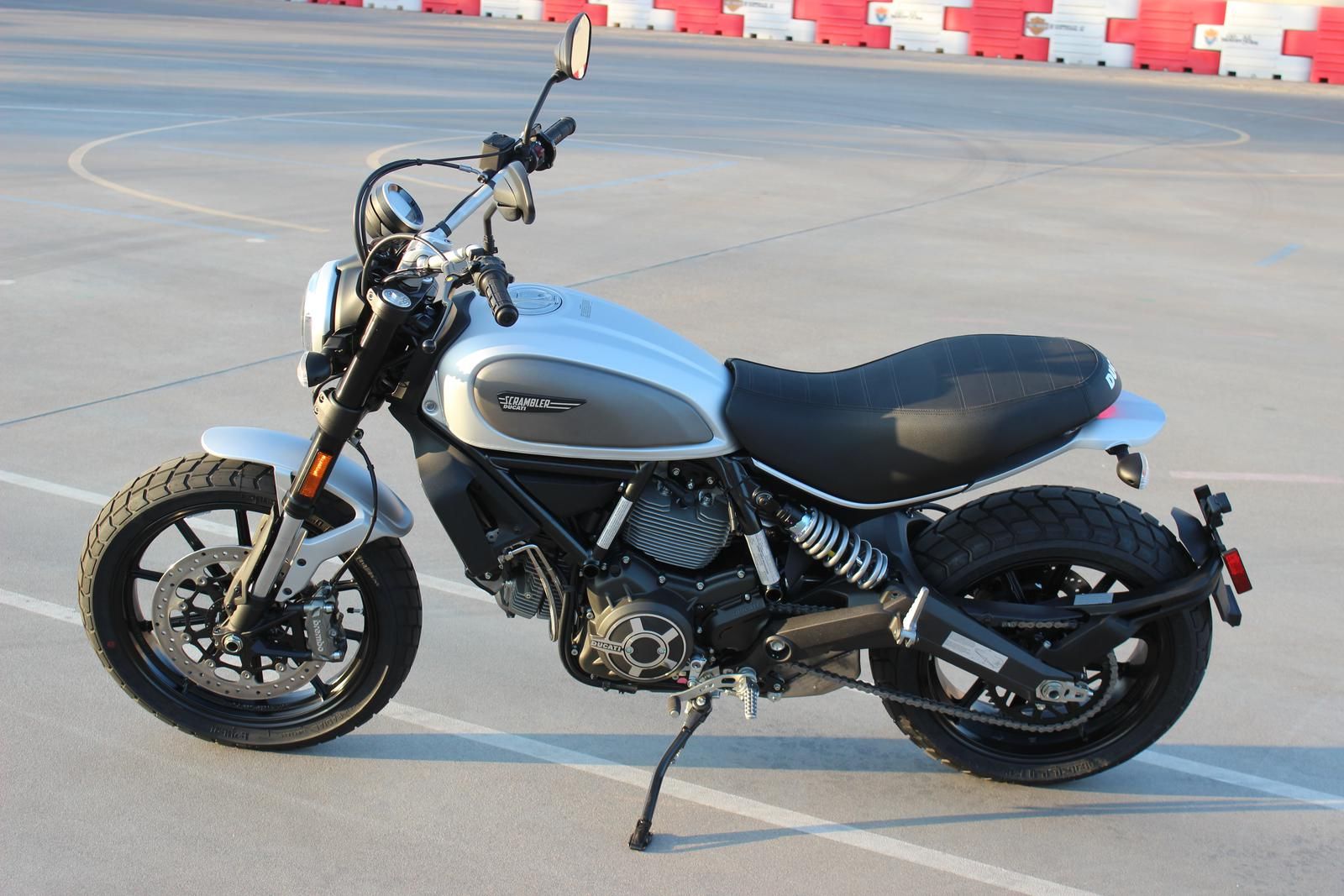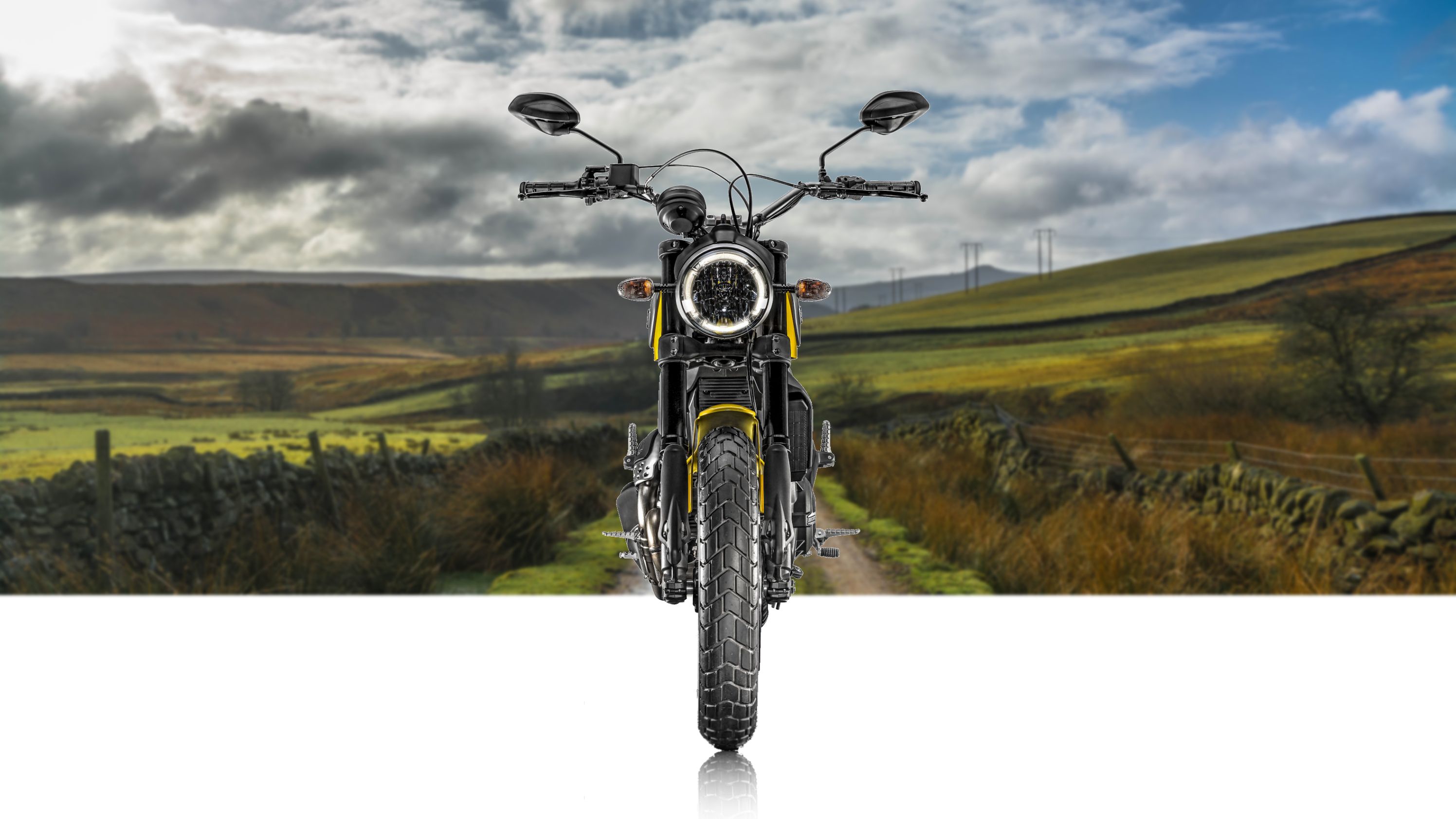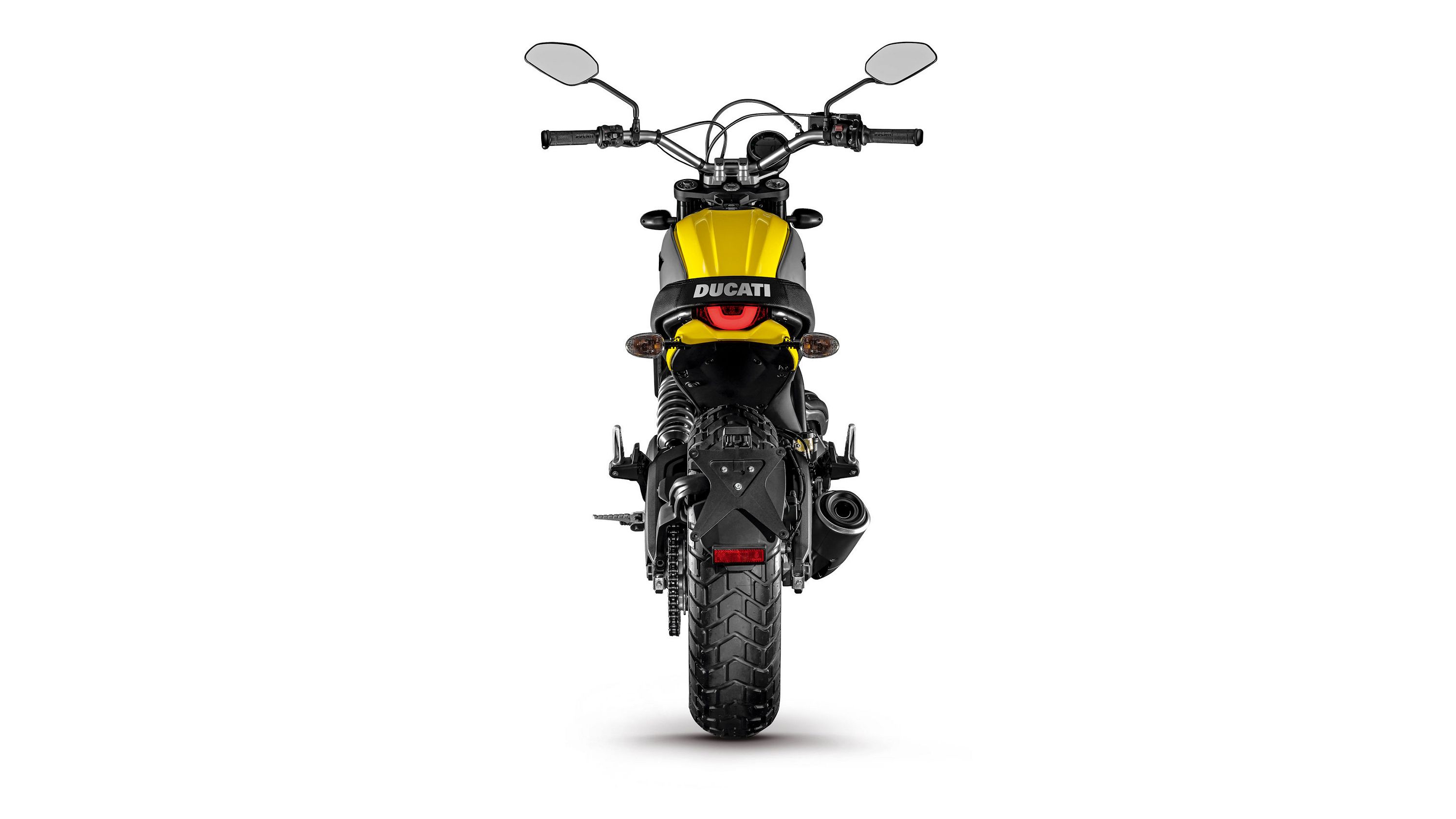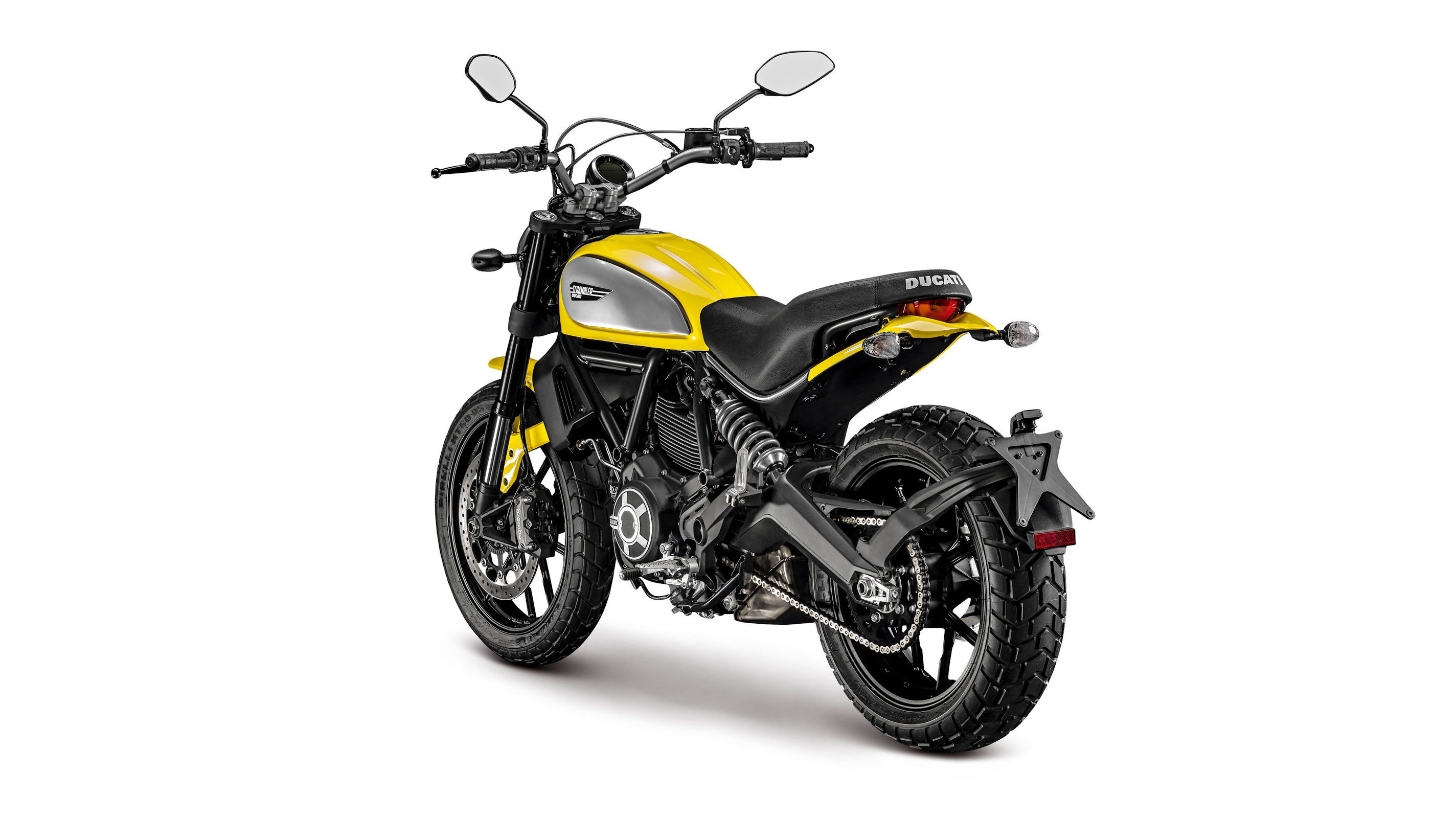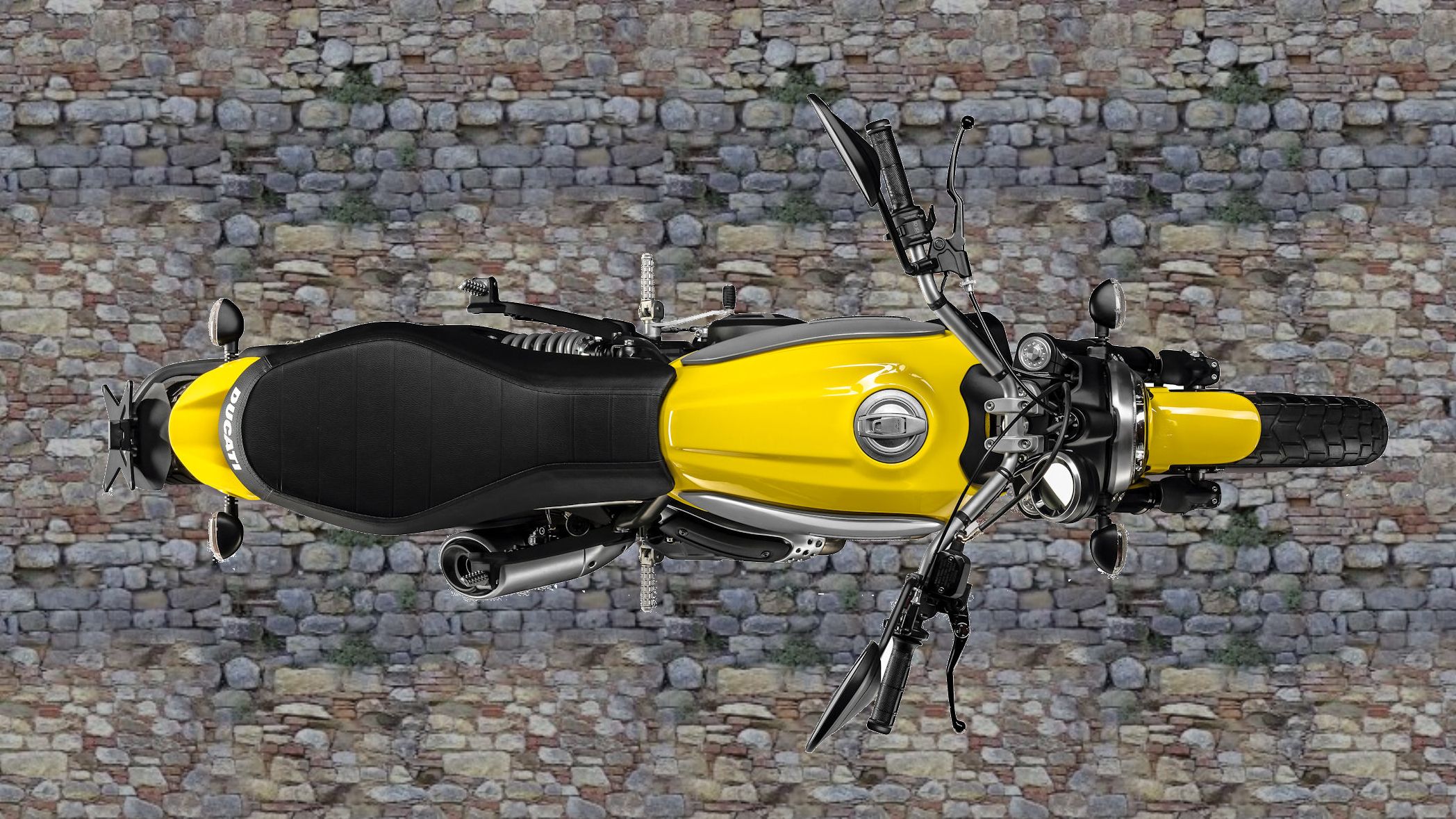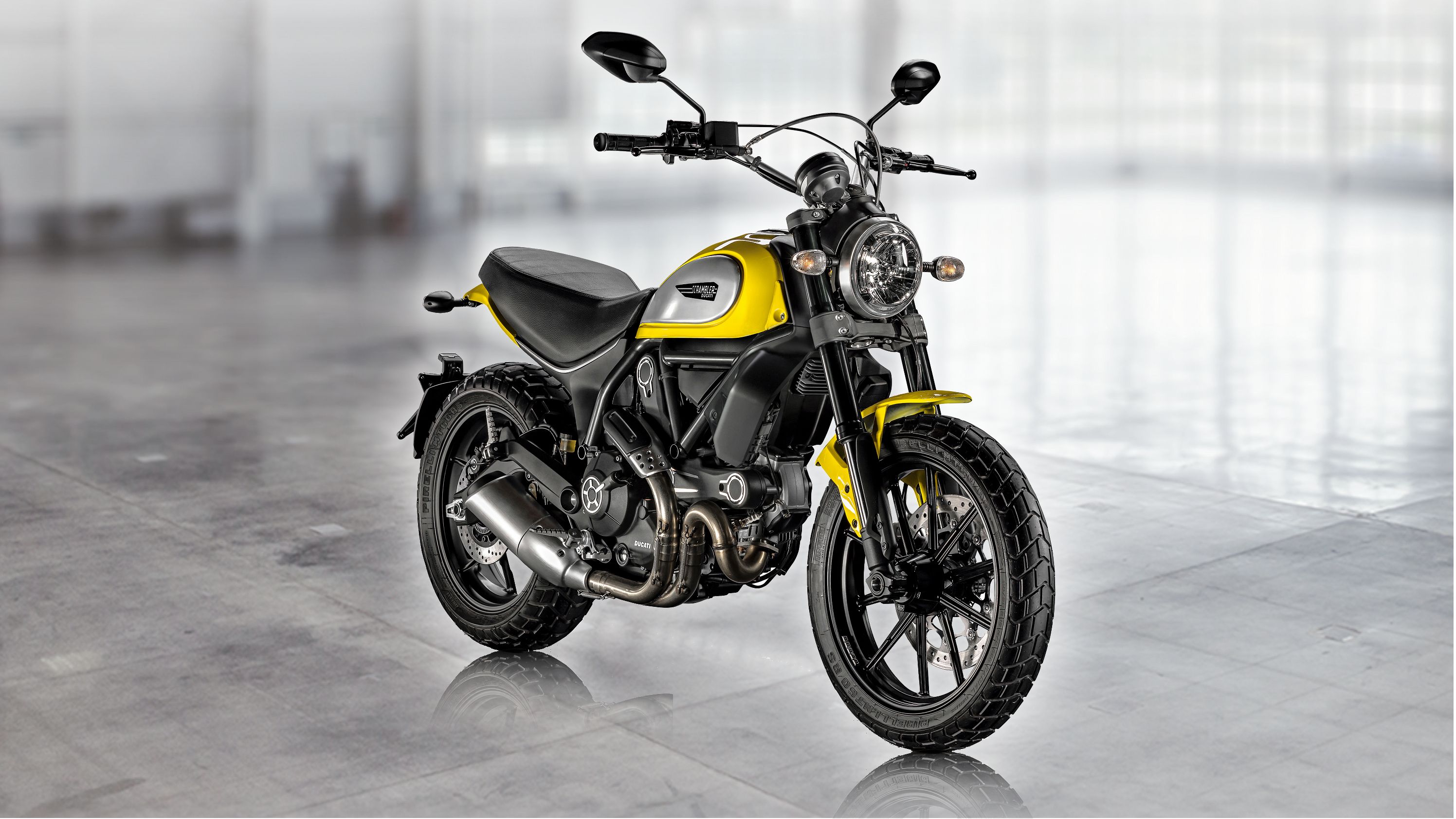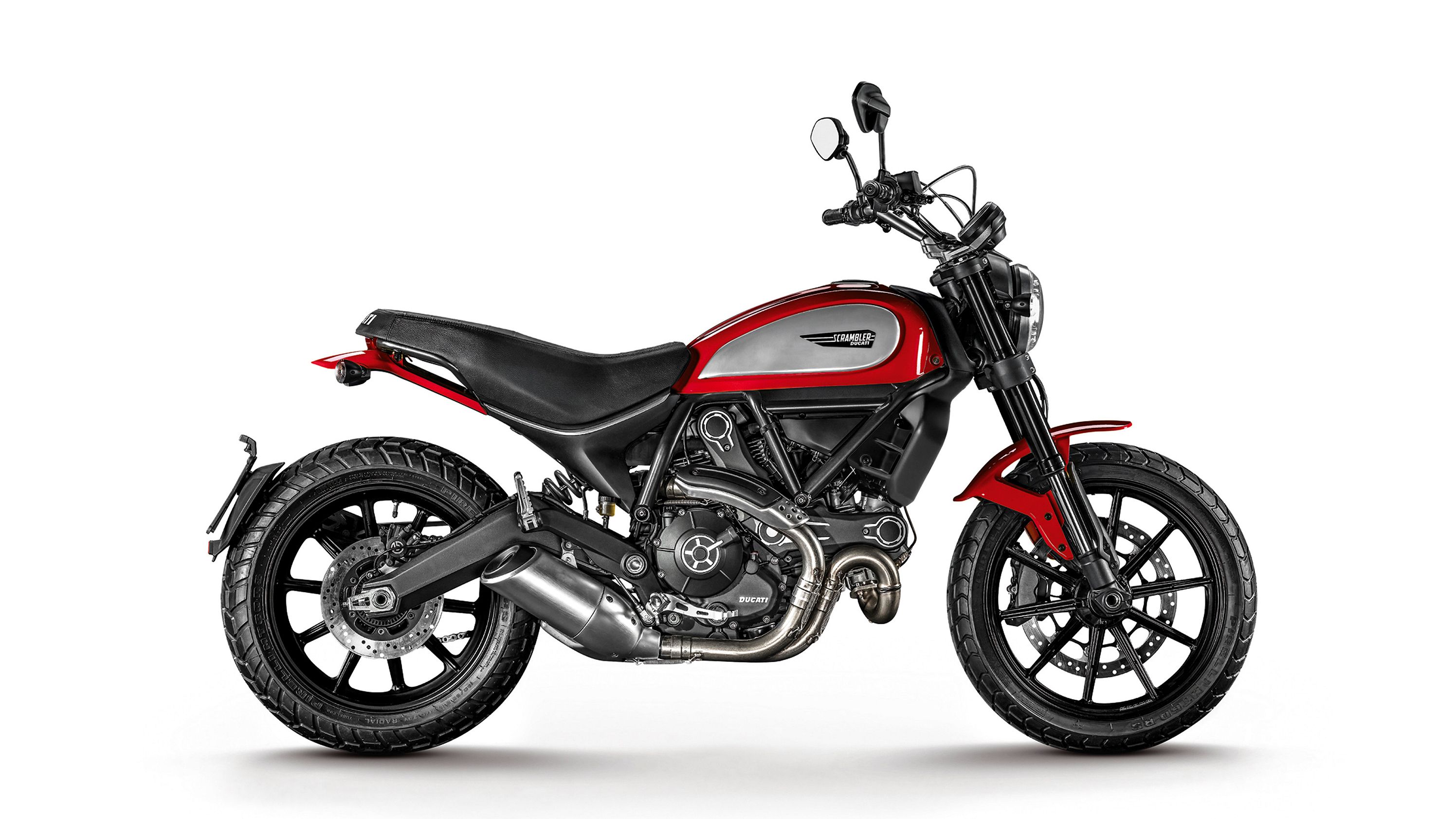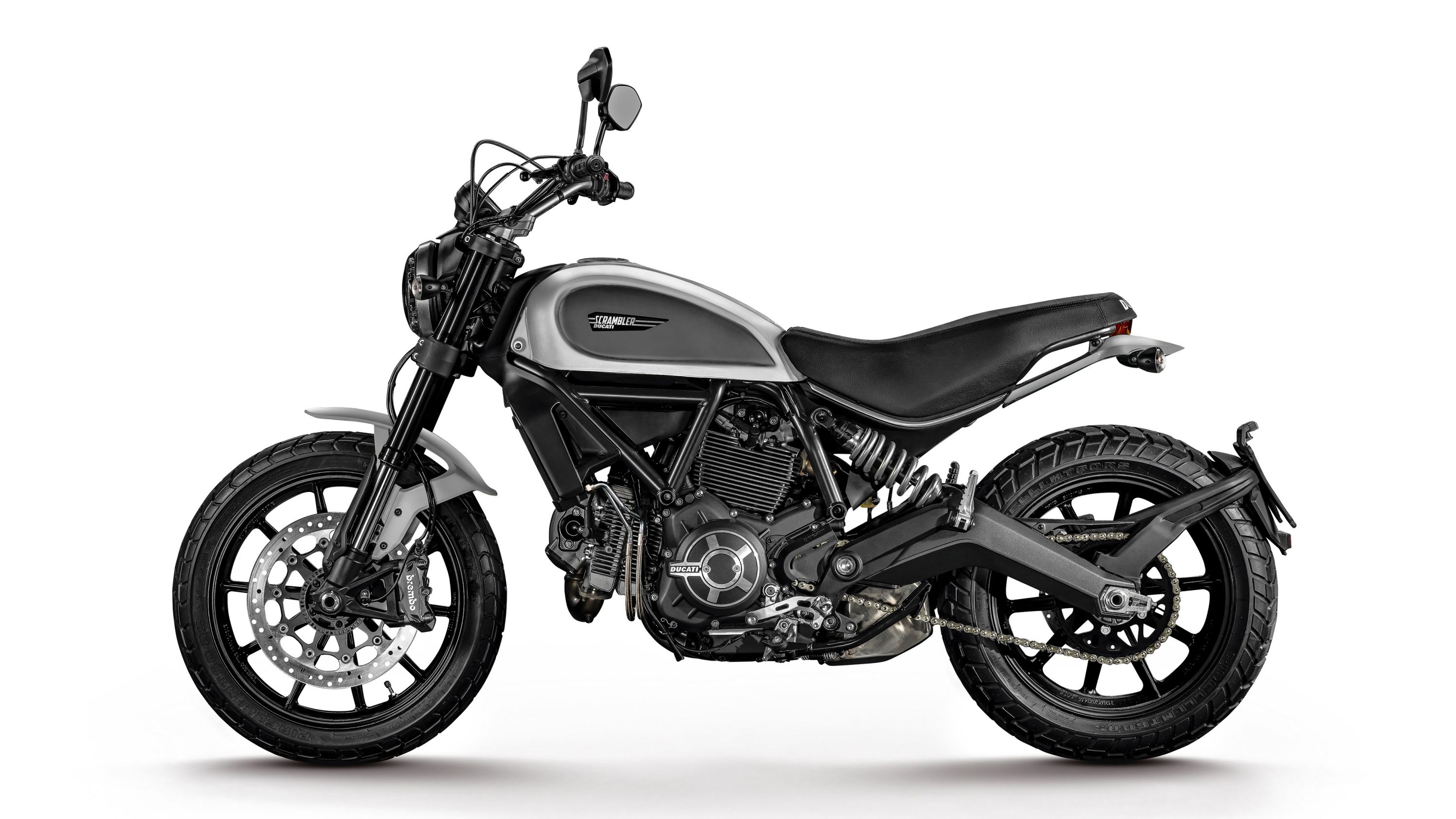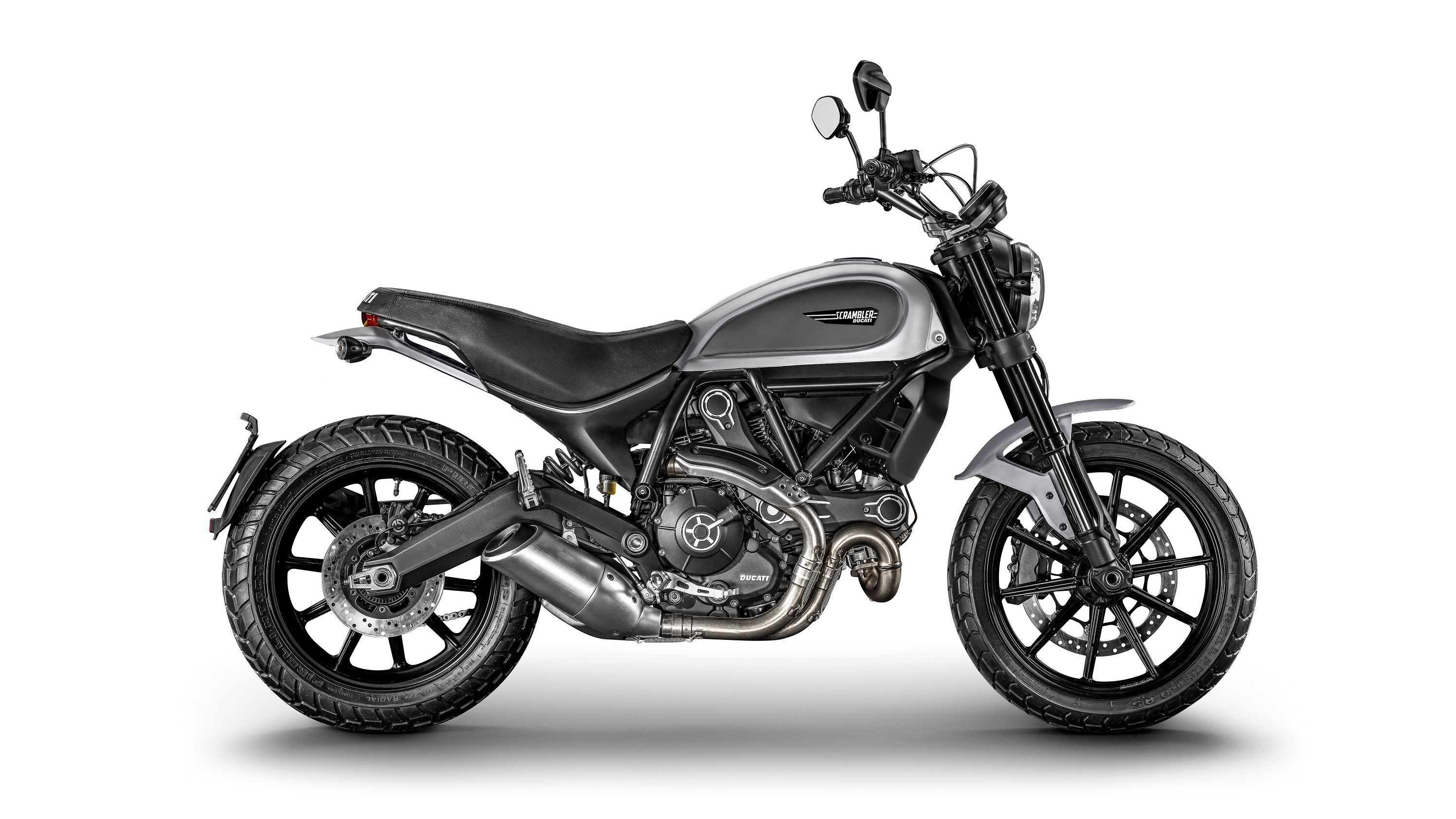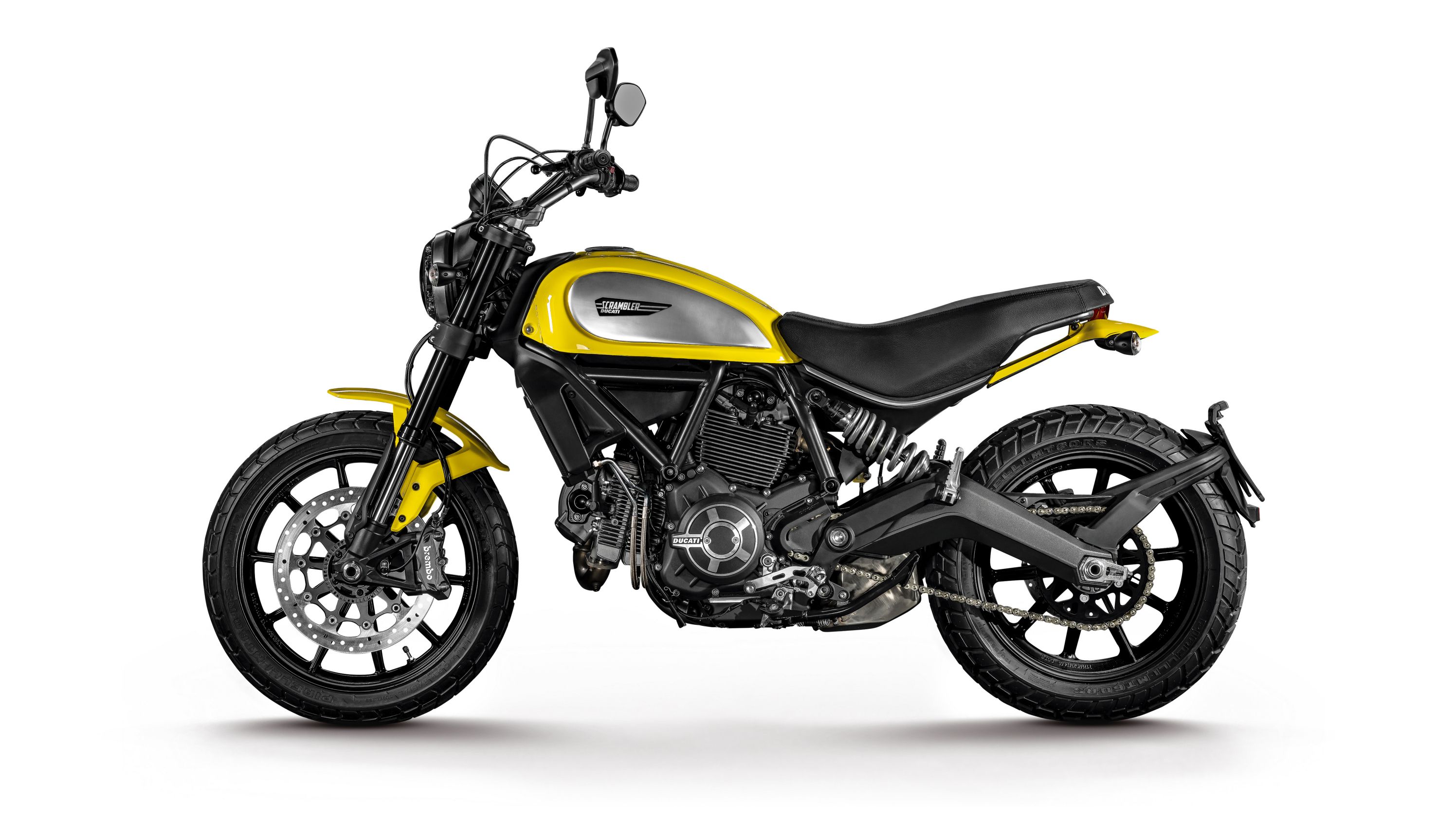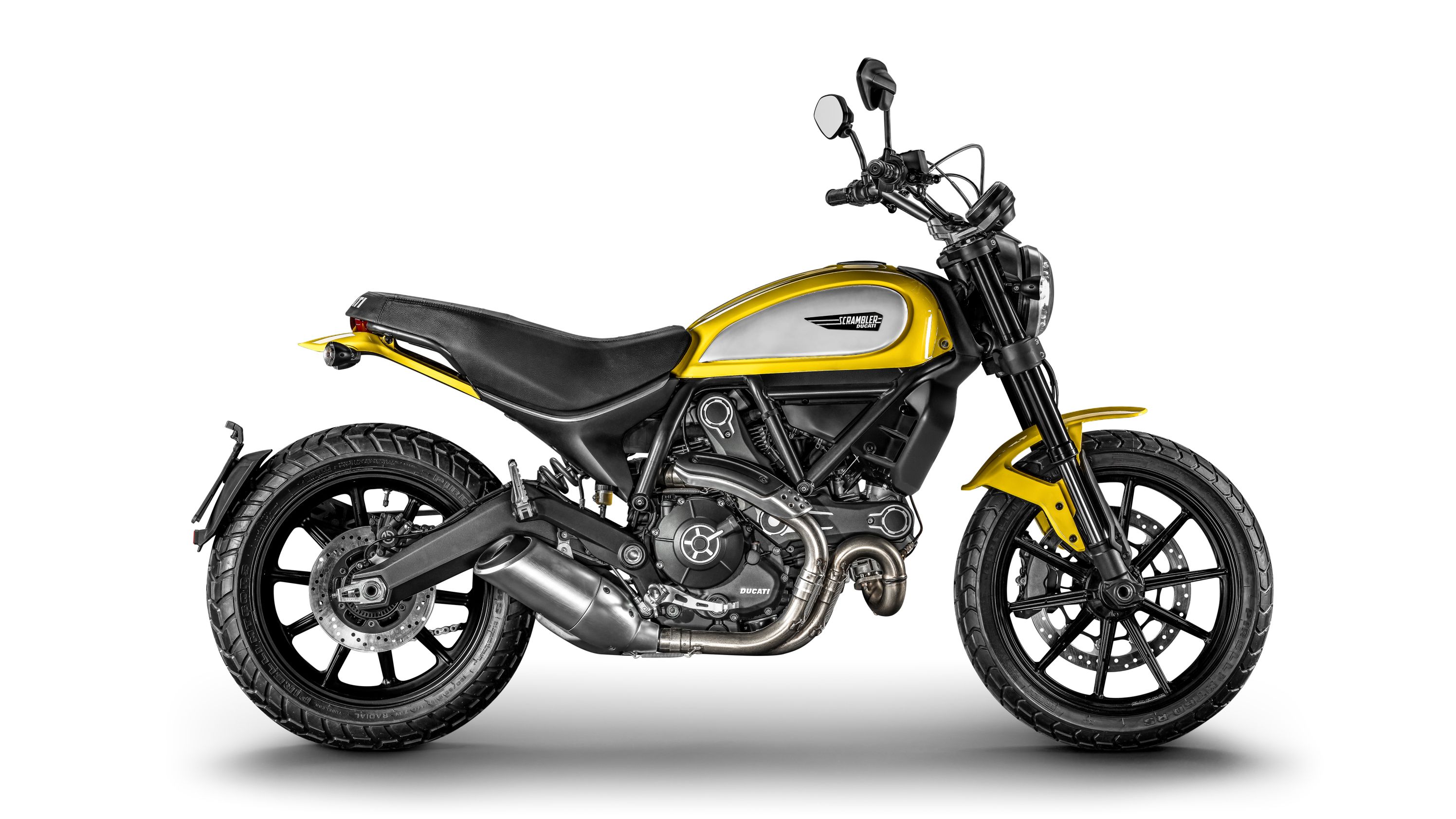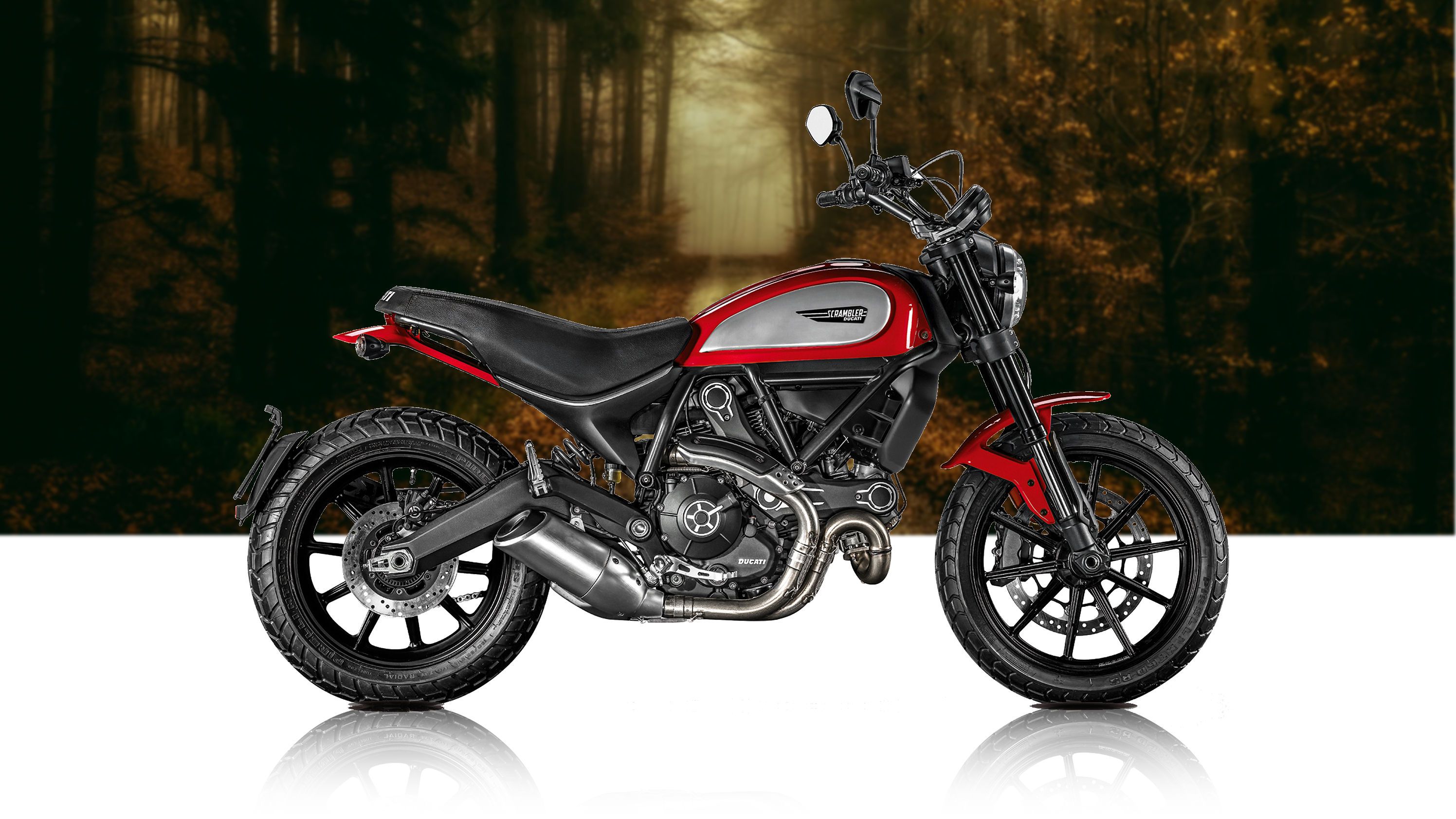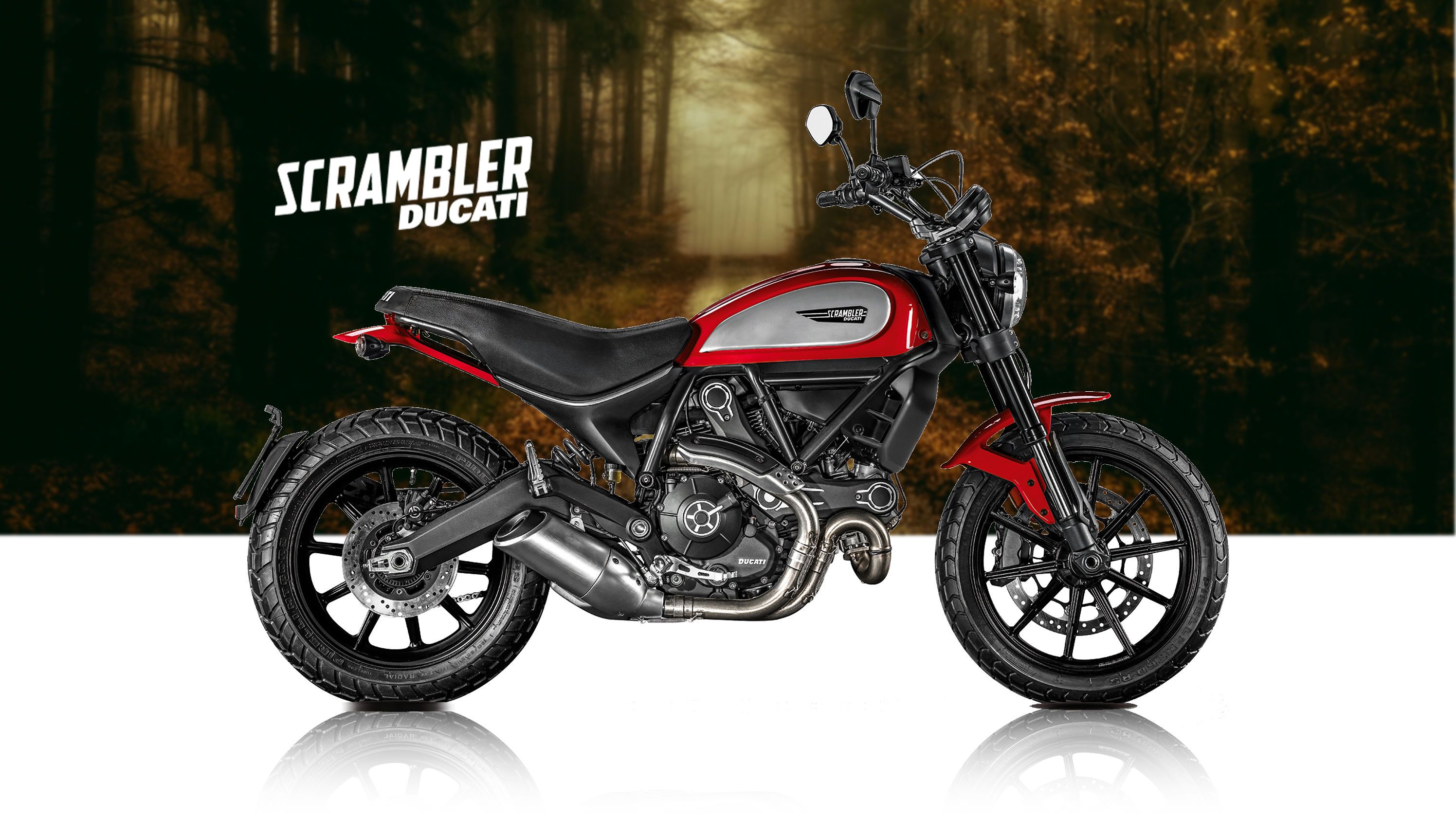The Ducati Scrambler family has been rapidly expanding since its inception -- in both the displacement ranges and available styles -- but the stalwart Icon remains largely the same into the 2018 model year. It brings the same street-wise spice to the table as ever, and it comes paired with the 803 cc L-twin that delivers its 75 ponies in an easy-to-manage powercurve. Ducati also expanded its palette a bit with the addition of the “Silver Ice” hue. Little else is changed for the '18 season, but why in the world would Ducati change something that seems to be working so well and is of such a recent vintage? If it ain't broke, don't fix it, right?
Continue reading for my review of the Ducati Scrambler Icon.
2017 - 2018 Ducati Scrambler Icon
- Make: Array
- Model: 2017 - 2018 Ducati Scrambler Icon
- Engine/Motor: L-Twin
- [do not use] Vehicle Model: Array
Design
Fun and whimsical with the vigor of youth, the Icon takes the somewhat off-road-tastic Scrambler and tunes it for that street life by dropping the mudguard-style rear end in favor of a sporty, upswept bobtail with a hugger to deal with the spray from the rear wheel and give it a bit of a performance vibe. The front fender is equally abbreviated with a heavily bobbed shape that runs with minimal side coverage and a cute little kick at the trailing edge for an unimpeded view of the front wheel.
Blackout treatment ties into the custom-bike culture starting at the ground level with the cast rims, and that achromatic finish continues onto the tough-looking inverted front forks, tripletree, handlebar and mirrors before flowing back to darken the frame, powerplant and swingarm. A boomerang shape makes the swingarm look modern and edgy, but that's just a secondary benefit; the primary consideration was the placement of the inconspicuous rear shock and the performance thereof.
In addition to the new Silver Ice paint, Ducati still offers the Icon in its previous finishes with '62 Yellow up for grabs alongside the timeless Ducati Red package. No matter which color you choose, the painted steel fuel tank is dominated by the interchangeable fuel-tank covers that come in a brushed-aluminum finish with the official badging on both sides.
As for the lighting, the round headlight makes for a nice, classic touch, and I'm a fan of the tucked-away taillight that is oh-so inconspicuous where it rides at the juncture of seat and sheet metal. Minimal they may be, but the lights all punch above their weight due to the LED technology that powers them.
Finally, the bench seat comes with the slightest swale for the rider's rear before it rises to the pillion with a pair of J.C. handles and swingarm-mount aluminum footpegs for your riding partner because let's face it; almost everything is more fun when you share it with a friend.
Chassis
A tubular-steel Trellis frame provides the structure but little in the way of aesthetic value due to its minimal construction and blackout treatment that makes it fairly inconspicuous against the engine. A pity, since a nicely exposed Trellis really adds something to the overall look but the Icon's bones are too subtle for all that. Since the engine itself is a stressed unit that displaces part of the frame, a number of components are missing entirely to further reduce the visual impact of the bones and lighten the entire assembly. Steering geometry is fairly typical for a standard with 24 degrees of rake, 4.4 inches of trail and a 35-degree, lock-to-lock sweep on the 56.9-inch wheelbase. This gives the Icon plenty of maneuverability on the road and in the parking lot without crossing into the twitchiness of (some) proper sportbikes or the wooden feeling of (some) cruisers.
Yeah, it's fun and sporty looking, but at the end of the day it's still considered an entry-level commuter bike, or even a second bike-toy for folks who use another more appropriate machine for the daily grind, so it's no surprise that the beefy, 41 mm usd forks run sans adjustments. Gotta' keep the price down somehow, right?
Out back, the offset, coil-over Kayaba monoshock tames the swingarm with adjustable preload and rebound damping features for a bit more ride-quality control than is afforded by the usual vanilla components. A single 330 mm disc and four-piston caliper hauls down the front wheel with authority while a 245 mm disc and single-pot caliper handles the rear. At 410-pounds soaking wet, the Icon doesn't have an excess of energy to deal with so the single disc up front is adequate, especially with ABS oversight to keep you from locking up at either end. Cast, 10-spoke wheels mount the Pirelli MT 60 RS hoops with a 110/80-18 and 180/55-17 on the front and rear, respectively.
|
Frame: |
Tubular steel Trellis frame |
|
Rake: |
24° |
|
Trail: |
112 mm (4.4 in.) |
|
Total steering lock: |
35° |
|
Front suspension: |
Upside down Kayaba 41 mm fork |
|
Rear suspension: |
Kayaba rear shock, pre-load and rebound adjustable. Aluminum double-sided swingarm |
|
Front brake: |
330 mm disc, radial 4-piston caliper with ABS as standard equipment |
|
Rear brake: |
245 mm disc, 1-piston floating caliper with ABS as standard equipment |
|
Front wheel/ Travel: |
10-spoke in light alloy, 3.00" x 18"/150 mm (5.9 in.) |
|
Rear wheel/ Travel: |
10-spoke in light alloy, 5.50" x 17"/ 150 mm (5.9 in.) |
|
Front tire: |
Pirelli MT 60 RS 110/80 R18 |
|
Rear tire: |
Pirelli MT 60 RS 180/55 R17 |
Drivetrain
As cool as the rest of the bike is, it's really just a setting for the gem that is the powerplant. Ducati's L-twin, really a 90-degree V-twin, uses Duc's famous Desmodromic valvetrain to time the two poppets in each head. It uses a push-open cam for each valve, nothing special there, but the pull-closed cam makes this into a different animal entirely. It provides a positive means of closure without the oh-so-common springs that are vulnerable to the harmonic float that can lead to valve-to-piston contact in a non-free-running engine, so rev away without fear. At 8,250 rpm, the mill grinds out a total of 75 horsepower, but the 50 pound-feet of torque maxes out 500 turns earlier at 7,750 rpm and it comes on with a linear delivery that is meant to be user-friendly, even to the relatively inexperienced.
The barrels measure out at 88 mm with a 66 mm stroke and an 11-to-1 compression ratio. Induction management falls to the 50 mm throttle body, electronic ignition system and the skills in your right wrist alone since it runs without traction control or any other fandanglery to complicate the works. A catalyst in the exhaust system helps the Scrambler family meet Euro 4 emissions standards with cooling fins to radiate the waste heat away from the air-cooled engine. A standard clutch couples engine power to the six-speed transmission, and a tough chain drive sends that power to the rear wheel.
|
Engine: |
L-Twin, Desmodromic distribution, 2 valves per cylinder, air cooled |
|
Displacement: |
803 cc |
|
Bore x stroke: |
88 x 66 mm |
|
Compression ratio: |
11:1 |
|
Power: |
73 hp @ 8,250 rpm |
|
Torque: |
49 lb-ft @ 5,750 rpm |
|
Fuel injection: |
Electronic fuel injection, 50 mm throttle body |
|
Exhaust: |
Exhaust system with single stainless steel muffler, aluminum silencer cover, catalytic converter and 2 lambda probes |
|
Gearbox: |
6 speed |
|
Clutch: |
APTC wet multiplate with mechanical control |
Pricing
You can score a new Scrambler Icon for $9,195 with a 24-month, unlimited-mileage warranty. This puts the Icon in a price range that might push some entry-level budgets, but is well affordable as a second (or third) bike for someone looking for a big-boy toy.
|
Standard Equipment: |
Steel tank with interchangeable aluminum side panels, headlight with glass lens, LED light-guide and interchangeable aluminum cover, LED rear light with diffusion-light, LCD instruments with interchangeable aluminum cover, machine-finished aluminum belt covers, under-seat storage compartment with USB socket |
|
Warranty : |
24 months unlimited mileage |
|
Colors: |
'62 Yellow, Ducati Red, Silver Ice |
|
Price: |
$9,195 |
Competitors
When it comes to scramblers, it's hard to beat Triumph for its deep roots and historical connection to the originals, so the Street Scrambler is my pick to go up against the Icon. Rather than modernizing the looks, Triumph sticks to something much closer to the lines of the old-school scramblers with a liberal dose of Britishness that just adds to the charm.
Wire wheels start things out right with classic looks and better ride quality if you decide to traipse off the blacktop. The front fender comes similarly cut down, just without that little flare at the trailing edge, and no matter which color you choose, the fenders at both ends come in the same blackout treatment as much of the rest of the bike; only the 3.2-gallon teardrop fuel tank bears the model color.
Rwu forks run with old-school bellow gaiters atop the blackout sliders, and of course, the tank comes with the classic knee dents-and-grippers on both sides. Probably the coolest part of the look is the exhaust, mundane as that might seem. Those shotgun pipes just evoke some unnamed emotion for me. Don't get me wrong, the Icon is cute, but the Street Scrambler has a more mature allure about it.
KYB supplies the suspension with standard, 41 mm, non-adjustable forks up front and a pair of coil-over shocks that come with only the courtesy spring-preload adjuster and nothing else to slip a little in the face of the Icon's rebound-damping tweak. Same with the brakes as Triumph runs with a two-piston front caliper against the four-pot anchor on the Icon, but both enjoy ABS protection to let you safely get the maximum out of the binders.
Trumpet runs the typical parallel-twin powerplant that just adds so much to the look. The heads sport cooling fins, but it is, in fact, a water-cooled mill. A 270-degree offset in the crankshaft gives the engine a lope that's every bit as cool sounding as the Icon's idle note, but at the end of the day, Trumpet's twingle just won't make the ponies like Ducati's L-twin. Horsepower tops out at 55, and the extra 9 pounds of grunt make up for it, just at the bottom end rather than the top. Considering how I imagine I'd use these bikes, the torque would be more useful, but to each his or her own.
The tag on the Street Scrambler is a bit proud at $10,800 for the Jet Black model, $11,050 for the Matt Khaki Green and $11,300 for the Korosi Red / Frozen Silver. This potentially pushes it up beyond the Icon's target group, but only by a hair, and it really comes down to the looks with these. Hmm having said that, a younger look and younger price seems to put the Icon in a pretty good position.
He Said
“Love the little Scramblers (and the big Scrambler); they look like a blast and just exude an indomitable spirit that the stodgier Brit lacks, even if I actually would rather be seen on the Triumph Street Scrambler, personally. I suppose that's an age thing. That said, the hugger and clipped tail makes this particular Scrambler attractive, and it just seems to incite the inner hooligan. Funtimes.”
She Said
My wife and fellow motorcycle writer, Allyn Hinton, says, “The Icon was the budget model out of Ducati's Scrambler lineup before the Sixty2 came on the scene. It's still affordable and still a lot of fun to ride. Torquey and with linear power delivery, the engine is derived from the 797 Monster but better. It is surprisingly off-road capable, light, and manageable, it would make a nice commuter as well as your weekend fun bike."
Specifications
|
Engine & Drivetrain: |
|
|
Engine: |
L-Twin, Desmodromic distribution, 2 valves per cylinder, air cooled |
|
Displacement: |
803 cc |
|
Bore x stroke: |
88 x 66 mm |
|
Compression ratio: |
11:1 |
|
Power: |
73 hp @ 8,250 rpm |
|
Torque: |
49 lb-ft @ 5,750 rpm |
|
Fuel injection: |
Electronic fuel injection, 50 mm throttle body |
|
Exhaust: |
Exhaust system with single stainless steel muffler, aluminum silencer cover, catalytic converter and 2 lambda probes |
|
Gearbox: |
6 speed |
|
Ratio: |
1=32/13 2=30/18 3=28/21 4=26/23 5=22/22 6=24/26 |
|
Primary drive: |
Straight cut gears; Ratio 1.85:1 |
|
Final drive: |
Chain; Front sprocket 15; Rear sprocket 46 |
|
Clutch: |
APTC wet multiplate with mechanical control |
|
Chassis: |
|
|
Frame: |
Tubular steel Trellis frame |
|
Rake: |
24° |
|
Trail: |
112 mm (4.4 in.) |
|
Total steering lock: |
35° |
|
Front suspension: |
Upside down Kayaba 41 mm fork |
|
Rear suspension: |
Kayaba rear shock, pre-load and rebound adjustable. Aluminum double-sided swingarm |
|
Front brake: |
330 mm disc, radial 4-piston caliper with ABS as standard equipment |
|
Rear brake: |
245 mm disc, 1-piston floating caliper with ABS as standard equipment |
|
Front wheel/ Travel: |
10-spoke in light alloy, 3.00" x 18"/150 mm (5.9 in.) |
|
Rear wheel/ Travel: |
10-spoke in light alloy, 5.50" x 17"/ 150 mm (5.9 in.) |
|
Front tire: |
Pirelli MT 60 RS 110/80 R18 |
|
Rear tire: |
Pirelli MT 60 RS 180/55 R17 |
|
Dimensions & Capacities: |
|
|
Wheelbase: |
1.445 mm (56.9 in.) |
|
Seat height: |
790 mm (31.1 in) ( low seat 770 mm (30.3 in) and high 810 mm (31.9 in) available as accessory) |
|
Max height: |
1.150 mm (45.3 in.) / brake reservoir |
|
Max width: |
845 mm (33.3 in.) / mirrors |
|
Max length: |
2.100 - 2.165 mm (82.7 - 85.2 in.) |
|
Fuel tank capacity: |
13.5 L - 3.57 gallons (US) |
|
Dry weight: |
170 kg (375 lb) |
|
Wet weight: |
186 kg (410 lb) |
|
Number of seats: |
Dual seat |
|
Details: |
|
|
Standard Equipment: |
Steel tank with interchangeable aluminum side panels, headlight with glass lens, LED light-guide and interchangeable aluminum cover, LED rear light with diffusion-light, LCD instruments with interchangeable aluminum cover, machine-finished aluminum belt covers, under-seat storage compartment with USB socket |
|
Warranty : |
24 months unlimited mileage |
|
Colors: |
'62 Yellow, Ducati Red, Silver Ice |
|
Price: |
$9,195 |
References
Triumph Street Scrambler
See our review of the Triumph Street Scrambler.

